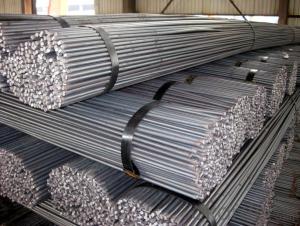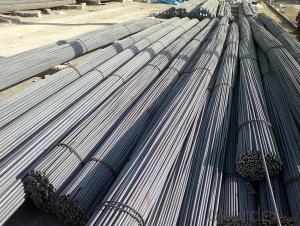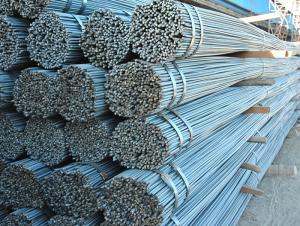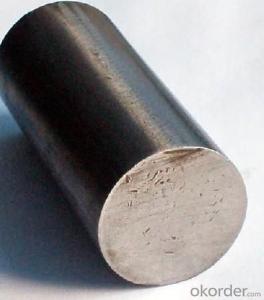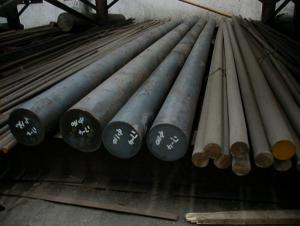hot rolled round bar
- Loading Port:
- China Main Port
- Payment Terms:
- TT OR LC
- Min Order Qty:
- -
- Supply Capability:
- -
OKorder Service Pledge
Quality Product, Order Online Tracking, Timely Delivery
OKorder Financial Service
Credit Rating, Credit Services, Credit Purchasing
You Might Also Like
Quick Details
| Steel Grade: | Standard: | Dimensions: | |||
| Place of Origin: | Brand Name: | Model Number: | |||
| Technique: | Application: | Alloy Or Not: | |||
| Special Use: | Type: | LENGTH: | |||
| COMMODITY: | SPEC: | SIZE: |
Packaging & Delivery
| Packaging Detail: | Packing Term: Bulk Packing Or Container. |
| Delivery Detail: | Within 30-45 days as of the date of contract signing |
Specifications
ROUND BAR (S45C,S20C,SS400,A36)
1.Length:6m to 12m
2.Grade:Q235/SS400/S20C/S45C
Remarks:
1.Origin / Manufacturer: China
2.Port of Loading: Tianjin Port,China
3.Packing Term: Bulk Packing Or Container
4.Measurement of Weight: By Theoretical Weighting
5.Certificate:ISO9001,CIC,BV,SGS
- Q:How do you calculate the moment of inertia of a steel round bar?
- To calculate the moment of inertia of a steel round bar, you need to know its mass and the radius of gyration. The moment of inertia can be determined using the formula I = (1/4) * π * r^4, where I represents the moment of inertia and r is the radius of the round bar.
- Q:Can steel round bars be used in the manufacturing of architectural features?
- Yes, steel round bars can be used in the manufacturing of architectural features. Steel round bars are versatile and strong, making them suitable for various applications in the construction industry, including architectural features. They can be used to create structural elements such as columns, beams, and supports, as well as decorative elements like stair railings, balustrades, and ornamental sculptures. Steel round bars offer durability, stability, and resistance to corrosion, making them an ideal choice for architectural features that need to withstand the test of time and harsh environmental conditions. Additionally, steel round bars can be easily fabricated and shaped into different designs, allowing for creativity and customization in architectural projects.
- Q:Can steel round bars be coated or painted?
- Yes, steel round bars can be coated or painted. Coating or painting steel round bars serves several purposes, such as preventing corrosion, enhancing aesthetics, and providing additional protection against environmental factors. Coatings and paints can be applied to steel round bars using various methods, including powder coating, electroplating, or wet paint application. These processes involve preparing the surface of the steel round bar by removing any existing rust or contaminants, followed by the application of the chosen coating or paint. The type of coating or paint used will depend on the specific requirements of the steel round bars, such as the intended use, environmental conditions, and desired appearance. Coating or painting steel round bars can significantly extend their lifespan, improve their visual appeal, and ensure their durability in various applications.
- Q:What is the difference between 40Cr round steel and 40Cr forging parts?
- Generally speaking the 40Cr steel is a kind of hot rolled steel (rarely cold). The need for heating the material before hot rolling process is or rolled, usually heated to above the recrystallization temperature, then condensation formed after the bar, of course I say is very simple, there are many steps.
- Q:Are steel round bars resistant to abrasion?
- Yes, steel round bars are generally resistant to abrasion. Steel is known for its high strength and durability, making it resistant to wear and tear caused by friction or rubbing against other surfaces. However, the level of abrasion resistance can vary depending on the specific type of steel and its composition. Certain grades of steel, such as hardened or alloy steels, are specifically designed to have enhanced resistance to abrasion. These steels undergo processes like heat treatment or alloying to increase their hardness and improve their ability to withstand abrasion. Overall, steel round bars are a reliable choice for applications where abrasion resistance is important.
- Q:Can steel round bars be used for making staircases?
- Yes, steel round bars can be used for making staircases. They provide durability, strength, and a modern aesthetic appeal to the staircase design.
- Q:What are the different finishes available for steel round bars?
- Steel round bars are available in several finishes, each serving a specific purpose and offering distinct benefits. Some commonly used finishes include: 1. Hot Rolled: By heating the steel above its recrystallization temperature and rapidly cooling it, a rough and scaly surface texture is achieved. This finish provides excellent corrosion resistance and durability. 2. Cold Rolled: The steel is rolled at room temperature, resulting in a smooth and polished finish. Cold rolled steel round bars are known for their precise dimensions, tight tolerances, and improved surface finish. 3. Bright Drawn: This finish involves subjecting the steel round bars to a drawing process, where they are pulled through a die to achieve the desired shape and size. It leaves the surface smooth, bright, and free from imperfections. 4. Polished: Polishing is typically done after cold rolling or drawing the steel round bars. Abrasive materials or chemical treatments are used to remove surface imperfections and create a highly reflective finish. Polished steel round bars are commonly used for decorative purposes. 5. Ground: Grinding is a process where abrasive wheels are used to remove surface imperfections or irregularities from the steel round bars. This results in a smooth and even finish, making the bars suitable for applications requiring tight tolerances and uniformity. 6. Galvanized: Galvanizing involves dipping the steel round bars in a bath of molten zinc, creating a protective layer that prevents corrosion and increases their lifespan. This finish is ideal for outdoor applications or environments with high humidity or moisture. These various finishes offer different properties and appearances, allowing steel round bars to be used in industries such as construction, automotive, manufacturing, and engineering. It is important to consider the specific requirements and conditions of the intended use when selecting the appropriate finish for steel round bars.
- Q:What are the different types of steel used in manufacturing round bars?
- There are several types of steel used in manufacturing round bars, including carbon steel, alloy steel, stainless steel, and tool steel. Carbon steel is the most common type, known for its high strength and affordability. Alloy steel contains additional elements such as chromium, nickel, and molybdenum to enhance its properties like corrosion resistance and toughness. Stainless steel is highly resistant to corrosion and can withstand high temperatures, making it ideal for applications in the food and chemical industry. Tool steel is specifically designed for tools and dies, offering high hardness, wear resistance, and toughness.
- Q:What are the advantages of using high-speed steel round bars?
- High-speed steel (HSS) round bars have several advantages. Firstly, they offer excellent hardness, allowing them to withstand high temperatures and wear. This makes them suitable for cutting tools and machine parts that undergo intense friction and heat. Additionally, HSS round bars have superior toughness, enabling them to resist chipping and breaking during heavy-duty applications. Furthermore, their high thermal conductivity helps dissipate heat efficiently, preventing damage to the material being worked on and prolonging tool life. Lastly, HSS round bars have good dimensional stability, ensuring accurate and precise machining results.
- Q:Can steel round bars be used in the automotive parts industry?
- Yes, steel round bars can be used in the automotive parts industry. Steel round bars are commonly used in the manufacturing of various automotive components due to their excellent strength, durability, and resistance to wear and tear. These bars can be fabricated into different shapes and sizes to meet the specific requirements of automotive parts such as axles, drive shafts, suspension components, steering components, and gears. The use of steel round bars ensures the structural integrity and reliability of automotive parts, making them ideal for withstanding the demanding conditions and loads experienced in the automotive industry.
1. Manufacturer Overview |
|
|---|---|
| Location | |
| Year Established | |
| Annual Output Value | |
| Main Markets | |
| Company Certifications | |
2. Manufacturer Certificates |
|
|---|---|
| a) Certification Name | |
| Range | |
| Reference | |
| Validity Period | |
3. Manufacturer Capability |
|
|---|---|
| a)Trade Capacity | |
| Nearest Port | |
| Export Percentage | |
| No.of Employees in Trade Department | |
| Language Spoken: | |
| b)Factory Information | |
| Factory Size: | |
| No. of Production Lines | |
| Contract Manufacturing | |
| Product Price Range | |
Send your message to us
hot rolled round bar
- Loading Port:
- China Main Port
- Payment Terms:
- TT OR LC
- Min Order Qty:
- -
- Supply Capability:
- -
OKorder Service Pledge
Quality Product, Order Online Tracking, Timely Delivery
OKorder Financial Service
Credit Rating, Credit Services, Credit Purchasing
Similar products
New products
Hot products
Hot Searches
Related keywords
























